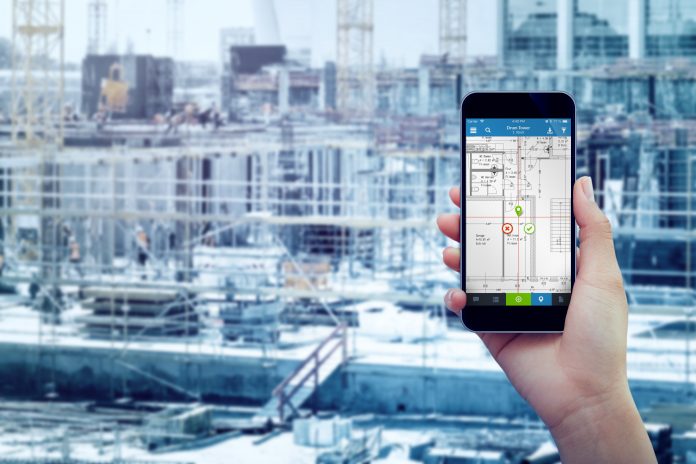2020 was set to be a big year for digital transformation in construction before the pandemic hit the industry. However, Ibrahim Imam of PlanRadar, says the crisis can serve as a catalyst that leaves a positive digital legacy
At the start of the year, there was a great deal more optimism in construction and many of us predicted that 2020 would be the year the sector finally turned a corner on digitisation. Then of course, the unexpected happened and in just a few short months, even the best laid plans have gone awry. For many companies, it was a case of going back to the drawing board entirely.
My question is where does this leave our sector going forward? The construction industry is used to dealing with difficult times and adapting to change, yet the problems presented to us by Covid-19 laid bare the inequalities in the sector, not just between the larger and smaller companies, but between those who had digitised before the lockdown and those who had not.
When we say digitised, we are referring to the process of converting information from a physical format to a digital one. However, digitisation is only the first of two steps. The second is digitalisation, which is the important part for construction. This is the process of using digitisation to improve your business processes and, hopefully, increasing the benefits to your employees and your profits as a company.
In 2017, McKinsey Global Institute had ranked construction as the least-digitised industry in Europe on its MGI digitisation index and accused it of evolving at a glacial place. At PlanRadar, our internal research has found that at least 60-70% of construction companies are not dealing with any digitalisation at all, and it is hampering them in a hugely competitive market.
There are many understandable reasons for this. There is the very real difficulty the sector faces in resolving the link between profit, investment and productivity. Profit margins since the 2008-09 crash have certainly left less money for investment in digital innovation and there are also challenges with the fluid nature of the construction workforce. Its project-based nature can make consistency difficult, and make it more difficult to modernise our teams, as well as just our tools.
2020 can still be the year of change
A 2019 report by Causeway, however, indicated that were clear signs of change ahead. In a survey of 200 key decision-makers in the UK building industry, it was suggested 2020 would be a critical year for digital transformation. Among those polled, 54% said the industry as a whole has been slow to adopt new technologies, while 56% said low margins restricted their ability to invest in new technology. Promisingly though, 81% said they planned to enact, or put in place, an initiative to improve their businesses digitally in 2020, with 88% saying it would increase employee productivity.
There were other clear signs of effective digitalisation already. The adoption of new management technologies reported to have increased productivity by 15%, while the use of biometric technology has led to cost savings of up to 20%, with 77% of adopters saying it also improved health and safety and accident rates. Some 44% of those who had invested in e-invoicing said they had reduced costs by 10-20% and firms that had already implemented some digital reforms have seen savings as high as 20%.
Helping us cope with future crises
One thing that quickly became apparent all across Europe during the last few months is that companies who already digitised key work processes are now coping better with the effects of the pandemic. As more companies moved from offices to working at home, tools that ensure the continuity of business operations have been thriving. This has been particularly true of SaaS (software as a service) companies that are based in the cloud rather than on-premises ecosystems, allowing employees to work close to full efficiency remotely. While the daily management of tasks on a construction site must primarily take place on site, there’s little doubt this crisis has already showed many construction leaders that a large part of their operations, particularly administrative ones, can be automated or done remotely.
Yet, these tools can also assist us in meeting the new challenges that Covid-19 will present. As we’ve seen with the creation of Nightingale hospitals and testing centres in car parks, built environment assets are now required to adapt quickly during the crises presented to us. There will be more demands placed on the development of flexible structures that can be remodelled either for healthcare purposes or during redevelopment, when we can reuse building materials to create a more sustainable built environment.
Digital tools are essential to achieving this, because project teams need access to a communication structure that is reliable and connects all the elements of the chain. With cloud-based digital documentation and communication software, digital blueprints can be accessed by every part of the supply chain and during different projects. This will allow multiple companies or teams to communicate across projects on the same building, and mean we are better equipped with the tools we need to adapt to crises of the future.
Leaving a digital legacy
When these levels of disruption are forced upon us, the cost of change has already been assured. If this crisis can serve as a catalyst for digitisation then there is a very real chance that lockdown can have leave a digital legacy, that might not have been likely in the same timeframe. Covid-19 can be construction’s chance to define a “new normal”, especially with the likelihood that fewer workers will be able to be on a jobsite at any given time. We know there is a growing appetite among leaders to have as many tasks automated or done remotely as possible. If they take this opportunity to embrace the new digital tools and solutions, it can help our sector to advance in the present, but also tackle the challenges we may face in the future.
Ibrahim Imam
Co-founder
PlanRadar
+44 (0)20 396 629 06
Twitter: @PlanRadarUK
LinkedIn: PlanRadar UK

















